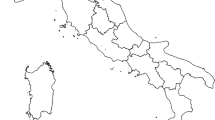Abstract
Lithuania has been undergoing a transition from one political culture (based on a centrally planned economy and a one-party system) to a radically different political culture (market economy and a democratic political system). After the declaration of independence in Lithuania, some new phenomena emerged in forestry: the privatisation of forest industry, the formation of a free timber market; increasing timber export levels; and new modes of ownership (private forests) and enterprise (private business logging companies). Private forest owners control approximately 680,000 ha of forest, 33% of the total forest area, projected to increase to 40–45% in the future. Small-scale private forestry is developing in Lithuania but there is a lack of information about the objectives and problems of private forest owners. This paper presents the main results of a survey carried out in 2004 by the Lithuanian Forest Research Institute. The most important forest ownership objectives are firewood production for home consumption, income generation from wood and non-wood product sales, and protection of nature and biodiversity. The main problems for private forest owners are that the forest properties are too small to achieve efficiency, owners lack money for silviculture activities and there is a heavy bureaucratic system for forest-related activity documentation. A cluster analysis of respondents’ ratings of importance for various forest management objectives reveals four groups of private forest owners. These groups are named according to their dominant management objective, as multi-objective owners, businessmen, consumers and ecologists.
Similar content being viewed by others
References
Boon, T.E., Meilby, H. and Thorsen, B.J. (2004), ‘An empirically-based typology of private forest owners in Denmark: Improving communication between authorities and owners’, Scandinavian Journal of Forest Research, 19(4): 45–55.
Dudutis, D. and Kupstaitis, N. (2004), ‘Ar lietuviams reikalingi miskai?’, Baltijos miskai ir mediena, 3(5): 8–12.
Härdter, U. (2002), ‘Urbanised owners of private forest property’, a paper presented at IUFRO — International Symposium on Contributions of Family Farm Enterprises to Sustainable Rural Development, Gengenbach/Schwarzwald, 29 July – 1 August 2002.
Hugosson, M. and Ingemarson, F. (2004), ‘Objectives and motivations of small-scale forest owners; theoretical modelling and qualitative assessment’, Silva Fennica, 38(2): 217–231.
Karppinen, H. (1998), ‘Objectives of non-industrial private forest owners: Differences and future trends in southern and northern Finland’, Journal of Forest Economics, 4: 147–173.
Karppinen, H. (1998), ‘Values and objectives of non-industrial private forest owners in Finland’, Silva Fennica, 32(1): 43–59.
Karppinen, H. (2000), Forest values and the objectives of forest ownership, Finnish Forest Research Institute Research Papers 757, Finnish Forest Research Institute, Helsinki Research Centre, Helsinki.
Kline, J.D., Alig, R.J. and Johnson, R.L. (2000), ‘Fostering the production of nontimber services among forest owners with heterogenous objectives’, Forest Science, 46: 302–311.
Kuuluvainen, J., Karppinen, H. and Ovaskainen, V. (1996), ‘Landowner objectives and non-industrial private timber supply’, Forest Science, 42: 300–309.
Lidestav, G. (1998), ‘Women as non-industrial private forestlandowners in Sweden’, Scandinavian Journal of Forest Research, 13: 66–73.
Lidestav, G. and Ekstrom, M. (2000), ‘Introducing gender in studies on management behaviour among non-industrial private forest owners’, Scandinavian Journal of Forest Research, 15: 378–386.
Lönnstedt, L. (1989), ‘Goals and cutting decisions of private small forest owners’, Scandinavian Journal of Forest Research, 4: 259–265.
Lönnstedt, L. (1997), ‘Non-industrial private forest owner’s decision process: A qualitative study about goals, time perspective, opportunities and alternatives’, Scandinavian Journal of Forest Research, 12: 302–310.
Ministry of Environment, State Forest Survey Service (2004), Lithuanian Statistical Yearbook of Forestry 2004, Kaunas.
Mizaraitė, D. (2001), ‘Privačių miškų savininkų tikslai, problemos ir poreikiai bei juos įtakojantys veiksniai’, Miškininkystė, 1(49): 33–46.
Pivoriunas, A. and Lazdinis, M. (2004), ‘Needs of private forest owners in the contexts of changing political systems: Lithuania as a case study’, Small-scale Forest Economics, Management and Policy, 3(2): 191–202.
Ripatti, P. and Järveläinen, V.-P. (1997), ‘Forecasting structural changes in non-industrial private forest holdings in Finland’, Scandinavian Forest Economics, 36: 215–230.
State Forest Survey Service (2005), Lithuanian Statistical Yearbook of Forestry, http://www.lvmi.lt/vmt/index.php, accessed 10 March 2005.
Author information
Authors and Affiliations
Rights and permissions
About this article
Cite this article
Mizaraite, D., Mizaras, S. The formation of small-scale forestry in countries with economies in transition: Observations from Lithuania. Small-scale Forestry 4, 437–450 (2005). https://doi.org/10.1007/s11842-005-0027-4
Issue Date:
DOI: https://doi.org/10.1007/s11842-005-0027-4




